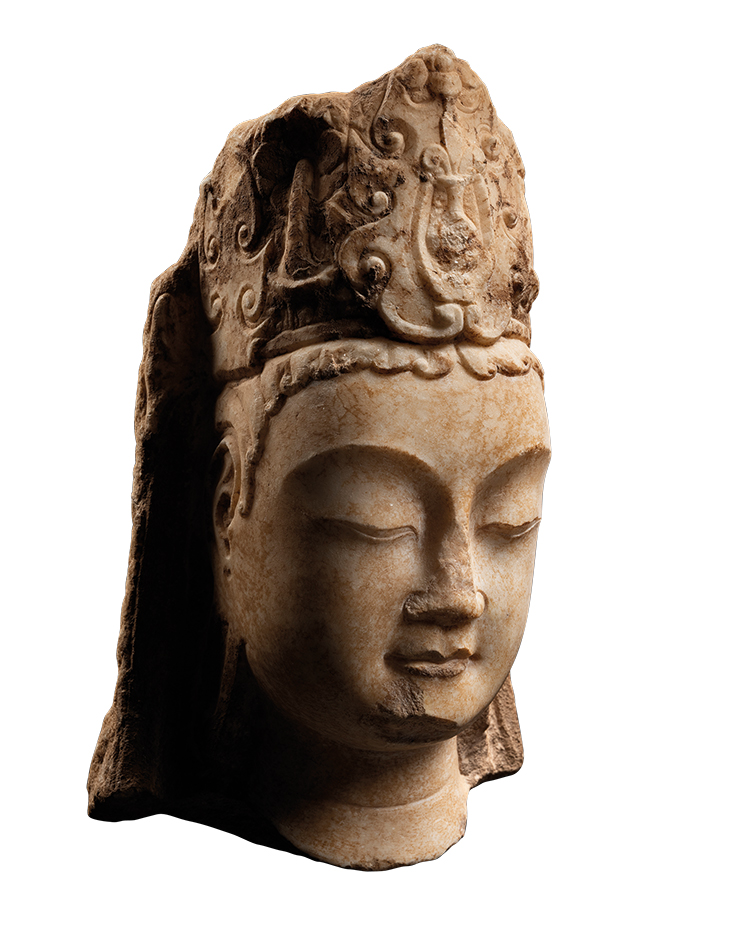This month, the city of Maastricht once again hosts the flagship fair of the European Fine Art Foundation (TEFAF) – still the continent’s pre-eminent marketplace for art and antiques. From 7–15 March, 280 dealers will convene at the Maastricht Exhibition & Conference Centre (MECC); they bring with them works of art spanning some seven millennia, many of which have not surfaced on the market for decades. Twenty-five newcomers enter the fray, six of them in the now 98-strong Antiques section, the remainder divided among Ancient Art, Design, Haute Joaillerie, Modern, Paintings, Paper, and Tribal. Once more, courtesy of the fair’s Showcase scheme, five recently established galleries dip their toes in the TEFAF water. Here is our second instalment of Susan Moore’s picks of the fair – catch up on part one here.
ALICE, CERN, Saint Genis-Pouilly (2019), Thomas Struth
Galleri K, €350,000
While the art crowd may be most familiar with Struth’s museumscapes, the German photographer also looks to penetrate key places of the human imagination and innovation in the realm of science and advanced technology, documenting laboratories and research facilities. Here is the largest of all landscapes of the modern brain, CERN. Struth’s monumental image of an experiment in the Large Hadron Collider, involving 1,800 physicists, engineers and technicians from around the world, offers a modern-day sublime. It invites us to reflect on the degree to which our culture is invested in technology but also offers it as an aesthetic experience. This is an abstract image of compelling symmetry, colour and form which, like so many of the artist’s photographs, is oddly disorientating in its clarity and detail. He has said of his process: ‘[When] I am taking a photograph, I am conscious that I am constructing images rather than taking snapshots.’
ALICE, CERN, Saint Genis-Pouilly (2019), Thomas Struth. Galleri K, €350,000. © Thomas Struth

Coconut cup (1607), Andries Frederiks
Koopman Rare Art, price in the region of £185,000
The coconut was an extremely rare and exotic item in Europe when the Amsterdam-based silversmith Andries Frederiks transformed it into a maritime fantasy. Ornamented with scales, it forms part of the body of a monstrous winged sea serpent. Poseidon, trident raised, stands on the cup’s shell cover, the creature supported by a Nereid riding a dolphin and the feet of the stand comprising four fierce turtles. A gift from a grateful Prince de Robecq, it has been in the Pessey family since the French Revolution.
Coconut cup (1607), Andries Frederiks. Koopman Rare Art, price in the region of £185,000

Le Port de Collioure (1905), André Derain
Stoppenbach & Delestre, £2.4m
Executed with broad brushstrokes of bold colour and line, this Fauve work has all the vigour and energy that defined the radical spirit of Derain when he was painting with Matisse in this fishing village. Inspired by the vibrant light of the south of France, which casts few shadows and eradicates contrasts of tone, he conceived a decorative, rhythmic pattern of expressive colour.
Le Port de Collioure (1905), André Derain. Stoppenbach & Delestre, £2.4m

St Michael the Archangel fighting Lucifer (1626–27), Giuseppe Cesari, Cavaliere d’Arpino
Hazlitt, price on application
New exhibitor Hazlitt unveils a vast painting commissioned by either Pope Urban VIII or his nephew Cardinal Francesco Barberini – either way, it entered the latter’s renowned collection in 1627 and only now emerges, in untouched condition and in its original frame, from the family’s Corsini descendants in Florence. The archangel fills almost the entire picture plane of this monumental canvas, his sword raised in triumph and one foot placed on the neck and head of the vanquished Satan, whose monstrosity is revealed by the grotesquely long digits and nails of his hands and feet. Michael’s pose echoes that of an antique Roman statue, the musculature of which is clearly revealed under his transparent and vivid lapis-blue tunic. The costly pigment, together with the painting’s high level of finish, demonstrates the artist’s intention to impress his illustrious patron. A month after the painting entered the cardinal’s collection, the artist was paid for a cartoon of the same subject which served as a model for a mosaic altarpiece in St Peter’s Basilica.
St Michael the Archangel fighting Lucifer (1626–27), Giuseppe Cesari, Cavaliere d’Arpino. Hazlitt, price on application

Christ Crucified (early 16th century), attributed to Tilman Riemenschneider
Julius Böhler Kunsthandlung, €250,000
Unveiled for the first time since it was acquired by Julius Böhler in 1907, this expressive and anatomically detailed corpus represents the moments immediately after the throes of death. Christ’s head with its Crown of Thorns hangs heavily and his tongue protrudes. Carved in the round, on a scale intended for private devotion, the figure is modelled on the autograph Crucifixion groups by the great German sculptor in Aub and Darmstadt.
Christ Crucified (early 16th century), attributed to Tilman Riemenschneider. Julius Böhler Kunsthandlung, €250,000

Head of Bodhisattva (Northern Qi Dynasty, 550–77), China
Gisèle Croës, €450,000
A highly translucent marble emphasises the ethereal grace and refined features of this head, subtly characterised by sharply rounded brows, a sensuous bud mouth and downcast eyes half closed in meditation. The vase at the centre of the headdress reveals the figure as Mahasthamaprapta, the bodhisattva of Wisdom who is usually portrayed as a woman in Chinese Buddhism and is one of the Eight Great bodhisattvas of the Mahayana tradition.
Head of Bodhisattva (Northern Qi Dynasty, 550–77), China. Gisèle Croës, €450,000

From the March 2020 issue of Apollo. Preview and subscribe here.



